-
EXECUTIVE SUMMARY
-
Market Overview
-
Key Findings
-
Market Segmentation
-
Competitive Landscape
-
Challenges and Opportunities
-
Future Outlook
-
MARKET INTRODUCTION
-
Definition
-
Scope of the study
- Research Objective
- Assumption
- Limitations
-
RESEARCH METHODOLOGY
-
Overview
-
Data Mining
-
Secondary Research
-
Primary Research
- Primary Interviews and Information Gathering Process
- Breakdown of Primary Respondents
-
Forecasting Model
-
Market Size Estimation
- Bottom-Up Approach
- Top-Down Approach
-
Data Triangulation
-
Validation
-
MARKET DYNAMICS
-
Overview
-
Drivers
-
Restraints
-
Opportunities
-
MARKET FACTOR ANALYSIS
-
Value chain Analysis
-
Porter's Five Forces Analysis
- Bargaining Power of Suppliers
- Bargaining Power of Buyers
- Threat of New Entrants
- Threat of Substitutes
- Intensity of Rivalry
-
COVID-19 Impact Analysis
- Market Impact Analysis
- Regional Impact
- Opportunity and Threat Analysis
-
POWER TRANSMISSION AND MOTION CONTROL MARKET, BY APPLICATION (USD BILLION)
-
Industrial Machinery
-
Automotive
-
Aerospace
-
Marine
-
Agriculture
-
POWER TRANSMISSION AND MOTION CONTROL MARKET, BY COMPONENT TYPE (USD BILLION)
-
Gearbox
-
Motor
-
Hydraulic Systems
-
Pneumatic Systems
-
Sensors
-
POWER TRANSMISSION AND MOTION CONTROL MARKET, BY END USE (USD BILLION)
-
Manufacturing
-
Construction
-
Energy
-
Transportation
-
Mining
-
POWER TRANSMISSION AND MOTION CONTROL MARKET, BY TRANSMISSION TYPE (USD BILLION)
-
Mechanical Transmission
-
Electrical Transmission
-
Hydraulic Transmission
-
Pneumatic Transmission
-
POWER TRANSMISSION AND MOTION CONTROL MARKET, BY REGIONAL (USD BILLION)
-
North America
- US
- Canada
-
Europe
- Germany
- UK
- France
- Russia
- Italy
- Spain
- Rest of Europe
-
APAC
- China
- India
- Japan
- South Korea
- Malaysia
- Thailand
- Indonesia
- Rest of APAC
-
South America
- Brazil
- Mexico
- Argentina
- Rest of South America
-
MEA
- GCC Countries
- South Africa
- Rest of MEA
-
COMPETITIVE LANDSCAPE
-
Overview
-
Competitive Analysis
-
Market share Analysis
-
Major Growth Strategy in the Power Transmission and Motion Control Market
-
Competitive Benchmarking
-
Leading Players in Terms of Number of Developments in the Power Transmission and Motion Control Market
-
Key developments and growth strategies
- New Product Launch/Service Deployment
- Merger & Acquisitions
- Joint Ventures
-
Major Players Financial Matrix
- Sales and Operating Income
- Major Players R&D Expenditure. 2023
-
COMPANY PROFILES
-
CurtissWright
- Financial Overview
- Products Offered
- Key Developments
- SWOT Analysis
- Key Strategies
-
Yaskawa Electric
- Financial Overview
- Products Offered
- Key Developments
- SWOT Analysis
- Key Strategies
-
Siemens
- Financial Overview
- Products Offered
- Key Developments
- SWOT Analysis
- Key Strategies
-
Bosch Rexroth
- Financial Overview
- Products Offered
- Key Developments
- SWOT Analysis
- Key Strategies
-
Moog
- Financial Overview
- Products Offered
- Key Developments
- SWOT Analysis
- Key Strategies
-
Platinum Equity
- Financial Overview
- Products Offered
- Key Developments
- SWOT Analysis
- Key Strategies
-
Rockwell Automation
- Financial Overview
- Products Offered
- Key Developments
- SWOT Analysis
- Key Strategies
-
Schneider Electric
- Financial Overview
- Products Offered
- Key Developments
- SWOT Analysis
- Key Strategies
-
Honeywell
- Financial Overview
- Products Offered
- Key Developments
- SWOT Analysis
- Key Strategies
-
ABB
- Financial Overview
- Products Offered
- Key Developments
- SWOT Analysis
- Key Strategies
-
3M
- Financial Overview
- Products Offered
- Key Developments
- SWOT Analysis
- Key Strategies
-
Baldor Electric
- Financial Overview
- Products Offered
- Key Developments
- SWOT Analysis
- Key Strategies
-
Parker Hannifin
- Financial Overview
- Products Offered
- Key Developments
- SWOT Analysis
- Key Strategies
-
General Electric
- Financial Overview
- Products Offered
- Key Developments
- SWOT Analysis
- Key Strategies
-
Eaton
- Financial Overview
- Products Offered
- Key Developments
- SWOT Analysis
- Key Strategies
-
APPENDIX
-
References
-
Related Reports
-
LIST OF TABLES
-
LIST OF ASSUMPTIONS
-
NORTH AMERICA POWER TRANSMISSION AND MOTION CONTROL MARKET SIZE ESTIMATES & FORECAST, BY APPLICATION, 2019-2032 (USD BILLIONS)
-
NORTH AMERICA POWER TRANSMISSION AND MOTION CONTROL MARKET SIZE ESTIMATES & FORECAST, BY COMPONENT TYPE, 2019-2032 (USD BILLIONS)
-
NORTH AMERICA POWER TRANSMISSION AND MOTION CONTROL MARKET SIZE ESTIMATES & FORECAST, BY END USE, 2019-2032 (USD BILLIONS)
-
NORTH AMERICA POWER TRANSMISSION AND MOTION CONTROL MARKET SIZE ESTIMATES & FORECAST, BY TRANSMISSION TYPE, 2019-2032 (USD BILLIONS)
-
NORTH AMERICA POWER TRANSMISSION AND MOTION CONTROL MARKET SIZE ESTIMATES & FORECAST, BY REGIONAL, 2019-2032 (USD BILLIONS)
-
US POWER TRANSMISSION AND MOTION CONTROL MARKET SIZE ESTIMATES & FORECAST, BY APPLICATION, 2019-2032 (USD BILLIONS)
-
US POWER TRANSMISSION AND MOTION CONTROL MARKET SIZE ESTIMATES & FORECAST, BY COMPONENT TYPE, 2019-2032 (USD BILLIONS)
-
US POWER TRANSMISSION AND MOTION CONTROL MARKET SIZE ESTIMATES & FORECAST, BY END USE, 2019-2032 (USD BILLIONS)
-
US POWER TRANSMISSION AND MOTION CONTROL MARKET SIZE ESTIMATES & FORECAST, BY TRANSMISSION TYPE, 2019-2032 (USD BILLIONS)
-
US POWER TRANSMISSION AND MOTION CONTROL MARKET SIZE ESTIMATES & FORECAST, BY REGIONAL, 2019-2032 (USD BILLIONS)
-
CANADA POWER TRANSMISSION AND MOTION CONTROL MARKET SIZE ESTIMATES & FORECAST, BY APPLICATION, 2019-2032 (USD BILLIONS)
-
CANADA POWER TRANSMISSION AND MOTION CONTROL MARKET SIZE ESTIMATES & FORECAST, BY COMPONENT TYPE, 2019-2032 (USD BILLIONS)
-
CANADA POWER TRANSMISSION AND MOTION CONTROL MARKET SIZE ESTIMATES & FORECAST, BY END USE, 2019-2032 (USD BILLIONS)
-
CANADA POWER TRANSMISSION AND MOTION CONTROL MARKET SIZE ESTIMATES & FORECAST, BY TRANSMISSION TYPE, 2019-2032 (USD BILLIONS)
-
CANADA POWER TRANSMISSION AND MOTION CONTROL MARKET SIZE ESTIMATES & FORECAST, BY REGIONAL, 2019-2032 (USD BILLIONS)
-
EUROPE POWER TRANSMISSION AND MOTION CONTROL MARKET SIZE ESTIMATES & FORECAST, BY APPLICATION, 2019-2032 (USD BILLIONS)
-
EUROPE POWER TRANSMISSION AND MOTION CONTROL MARKET SIZE ESTIMATES & FORECAST, BY COMPONENT TYPE, 2019-2032 (USD BILLIONS)
-
EUROPE POWER TRANSMISSION AND MOTION CONTROL MARKET SIZE ESTIMATES & FORECAST, BY END USE, 2019-2032 (USD BILLIONS)
-
EUROPE POWER TRANSMISSION AND MOTION CONTROL MARKET SIZE ESTIMATES & FORECAST, BY TRANSMISSION TYPE, 2019-2032 (USD BILLIONS)
-
EUROPE POWER TRANSMISSION AND MOTION CONTROL MARKET SIZE ESTIMATES & FORECAST, BY REGIONAL, 2019-2032 (USD BILLIONS)
-
GERMANY POWER TRANSMISSION AND MOTION CONTROL MARKET SIZE ESTIMATES & FORECAST, BY APPLICATION, 2019-2032 (USD BILLIONS)
-
GERMANY POWER TRANSMISSION AND MOTION CONTROL MARKET SIZE ESTIMATES & FORECAST, BY COMPONENT TYPE, 2019-2032 (USD BILLIONS)
-
GERMANY POWER TRANSMISSION AND MOTION CONTROL MARKET SIZE ESTIMATES & FORECAST, BY END USE, 2019-2032 (USD BILLIONS)
-
GERMANY POWER TRANSMISSION AND MOTION CONTROL MARKET SIZE ESTIMATES & FORECAST, BY TRANSMISSION TYPE, 2019-2032 (USD BILLIONS)
-
GERMANY POWER TRANSMISSION AND MOTION CONTROL MARKET SIZE ESTIMATES & FORECAST, BY REGIONAL, 2019-2032 (USD BILLIONS)
-
UK POWER TRANSMISSION AND MOTION CONTROL MARKET SIZE ESTIMATES & FORECAST, BY APPLICATION, 2019-2032 (USD BILLIONS)
-
UK POWER TRANSMISSION AND MOTION CONTROL MARKET SIZE ESTIMATES & FORECAST, BY COMPONENT TYPE, 2019-2032 (USD BILLIONS)
-
UK POWER TRANSMISSION AND MOTION CONTROL MARKET SIZE ESTIMATES & FORECAST, BY END USE, 2019-2032 (USD BILLIONS)
-
UK POWER TRANSMISSION AND MOTION CONTROL MARKET SIZE ESTIMATES & FORECAST, BY TRANSMISSION TYPE, 2019-2032 (USD BILLIONS)
-
UK POWER TRANSMISSION AND MOTION CONTROL MARKET SIZE ESTIMATES & FORECAST, BY REGIONAL, 2019-2032 (USD BILLIONS)
-
FRANCE POWER TRANSMISSION AND MOTION CONTROL MARKET SIZE ESTIMATES & FORECAST, BY APPLICATION, 2019-2032 (USD BILLIONS)
-
FRANCE POWER TRANSMISSION AND MOTION CONTROL MARKET SIZE ESTIMATES & FORECAST, BY COMPONENT TYPE, 2019-2032 (USD BILLIONS)
-
FRANCE POWER TRANSMISSION AND MOTION CONTROL MARKET SIZE ESTIMATES & FORECAST, BY END USE, 2019-2032 (USD BILLIONS)
-
FRANCE POWER TRANSMISSION AND MOTION CONTROL MARKET SIZE ESTIMATES & FORECAST, BY TRANSMISSION TYPE, 2019-2032 (USD BILLIONS)
-
FRANCE POWER TRANSMISSION AND MOTION CONTROL MARKET SIZE ESTIMATES & FORECAST, BY REGIONAL, 2019-2032 (USD BILLIONS)
-
RUSSIA POWER TRANSMISSION AND MOTION CONTROL MARKET SIZE ESTIMATES & FORECAST, BY APPLICATION, 2019-2032 (USD BILLIONS)
-
RUSSIA POWER TRANSMISSION AND MOTION CONTROL MARKET SIZE ESTIMATES & FORECAST, BY COMPONENT TYPE, 2019-2032 (USD BILLIONS)
-
RUSSIA POWER TRANSMISSION AND MOTION CONTROL MARKET SIZE ESTIMATES & FORECAST, BY END USE, 2019-2032 (USD BILLIONS)
-
RUSSIA POWER TRANSMISSION AND MOTION CONTROL MARKET SIZE ESTIMATES & FORECAST, BY TRANSMISSION TYPE, 2019-2032 (USD BILLIONS)
-
RUSSIA POWER TRANSMISSION AND MOTION CONTROL MARKET SIZE ESTIMATES & FORECAST, BY REGIONAL, 2019-2032 (USD BILLIONS)
-
ITALY POWER TRANSMISSION AND MOTION CONTROL MARKET SIZE ESTIMATES & FORECAST, BY APPLICATION, 2019-2032 (USD BILLIONS)
-
ITALY POWER TRANSMISSION AND MOTION CONTROL MARKET SIZE ESTIMATES & FORECAST, BY COMPONENT TYPE, 2019-2032 (USD BILLIONS)
-
ITALY POWER TRANSMISSION AND MOTION CONTROL MARKET SIZE ESTIMATES & FORECAST, BY END USE, 2019-2032 (USD BILLIONS)
-
ITALY POWER TRANSMISSION AND MOTION CONTROL MARKET SIZE ESTIMATES & FORECAST, BY TRANSMISSION TYPE, 2019-2032 (USD BILLIONS)
-
ITALY POWER TRANSMISSION AND MOTION CONTROL MARKET SIZE ESTIMATES & FORECAST, BY REGIONAL, 2019-2032 (USD BILLIONS)
-
SPAIN POWER TRANSMISSION AND MOTION CONTROL MARKET SIZE ESTIMATES & FORECAST, BY APPLICATION, 2019-2032 (USD BILLIONS)
-
SPAIN POWER TRANSMISSION AND MOTION CONTROL MARKET SIZE ESTIMATES & FORECAST, BY COMPONENT TYPE, 2019-2032 (USD BILLIONS)
-
SPAIN POWER TRANSMISSION AND MOTION CONTROL MARKET SIZE ESTIMATES & FORECAST, BY END USE, 2019-2032 (USD BILLIONS)
-
SPAIN POWER TRANSMISSION AND MOTION CONTROL MARKET SIZE ESTIMATES & FORECAST, BY TRANSMISSION TYPE, 2019-2032 (USD BILLIONS)
-
SPAIN POWER TRANSMISSION AND MOTION CONTROL MARKET SIZE ESTIMATES & FORECAST, BY REGIONAL, 2019-2032 (USD BILLIONS)
-
REST OF EUROPE POWER TRANSMISSION AND MOTION CONTROL MARKET SIZE ESTIMATES & FORECAST, BY APPLICATION, 2019-2032 (USD BILLIONS)
-
REST OF EUROPE POWER TRANSMISSION AND MOTION CONTROL MARKET SIZE ESTIMATES & FORECAST, BY COMPONENT TYPE, 2019-2032 (USD BILLIONS)
-
REST OF EUROPE POWER TRANSMISSION AND MOTION CONTROL MARKET SIZE ESTIMATES & FORECAST, BY END USE, 2019-2032 (USD BILLIONS)
-
REST OF EUROPE POWER TRANSMISSION AND MOTION CONTROL MARKET SIZE ESTIMATES & FORECAST, BY TRANSMISSION TYPE, 2019-2032 (USD BILLIONS)
-
REST OF EUROPE POWER TRANSMISSION AND MOTION CONTROL MARKET SIZE ESTIMATES & FORECAST, BY REGIONAL, 2019-2032 (USD BILLIONS)
-
APAC POWER TRANSMISSION AND MOTION CONTROL MARKET SIZE ESTIMATES & FORECAST, BY APPLICATION, 2019-2032 (USD BILLIONS)
-
APAC POWER TRANSMISSION AND MOTION CONTROL MARKET SIZE ESTIMATES & FORECAST, BY COMPONENT TYPE, 2019-2032 (USD BILLIONS)
-
APAC POWER TRANSMISSION AND MOTION CONTROL MARKET SIZE ESTIMATES & FORECAST, BY END USE, 2019-2032 (USD BILLIONS)
-
APAC POWER TRANSMISSION AND MOTION CONTROL MARKET SIZE ESTIMATES & FORECAST, BY TRANSMISSION TYPE, 2019-2032 (USD BILLIONS)
-
APAC POWER TRANSMISSION AND MOTION CONTROL MARKET SIZE ESTIMATES & FORECAST, BY REGIONAL, 2019-2032 (USD BILLIONS)
-
CHINA POWER TRANSMISSION AND MOTION CONTROL MARKET SIZE ESTIMATES & FORECAST, BY APPLICATION, 2019-2032 (USD BILLIONS)
-
CHINA POWER TRANSMISSION AND MOTION CONTROL MARKET SIZE ESTIMATES & FORECAST, BY COMPONENT TYPE, 2019-2032 (USD BILLIONS)
-
CHINA POWER TRANSMISSION AND MOTION CONTROL MARKET SIZE ESTIMATES & FORECAST, BY END USE, 2019-2032 (USD BILLIONS)
-
CHINA POWER TRANSMISSION AND MOTION CONTROL MARKET SIZE ESTIMATES & FORECAST, BY TRANSMISSION TYPE, 2019-2032 (USD BILLIONS)
-
CHINA POWER TRANSMISSION AND MOTION CONTROL MARKET SIZE ESTIMATES & FORECAST, BY REGIONAL, 2019-2032 (USD BILLIONS)
-
INDIA POWER TRANSMISSION AND MOTION CONTROL MARKET SIZE ESTIMATES & FORECAST, BY APPLICATION, 2019-2032 (USD BILLIONS)
-
INDIA POWER TRANSMISSION AND MOTION CONTROL MARKET SIZE ESTIMATES & FORECAST, BY COMPONENT TYPE, 2019-2032 (USD BILLIONS)
-
INDIA POWER TRANSMISSION AND MOTION CONTROL MARKET SIZE ESTIMATES & FORECAST, BY END USE, 2019-2032 (USD BILLIONS)
-
INDIA POWER TRANSMISSION AND MOTION CONTROL MARKET SIZE ESTIMATES & FORECAST, BY TRANSMISSION TYPE, 2019-2032 (USD BILLIONS)
-
INDIA POWER TRANSMISSION AND MOTION CONTROL MARKET SIZE ESTIMATES & FORECAST, BY REGIONAL, 2019-2032 (USD BILLIONS)
-
JAPAN POWER TRANSMISSION AND MOTION CONTROL MARKET SIZE ESTIMATES & FORECAST, BY APPLICATION, 2019-2032 (USD BILLIONS)
-
JAPAN POWER TRANSMISSION AND MOTION CONTROL MARKET SIZE ESTIMATES & FORECAST, BY COMPONENT TYPE, 2019-2032 (USD BILLIONS)
-
JAPAN POWER TRANSMISSION AND MOTION CONTROL MARKET SIZE ESTIMATES & FORECAST, BY END USE, 2019-2032 (USD BILLIONS)
-
JAPAN POWER TRANSMISSION AND MOTION CONTROL MARKET SIZE ESTIMATES & FORECAST, BY TRANSMISSION TYPE, 2019-2032 (USD BILLIONS)
-
JAPAN POWER TRANSMISSION AND MOTION CONTROL MARKET SIZE ESTIMATES & FORECAST, BY REGIONAL, 2019-2032 (USD BILLIONS)
-
SOUTH KOREA POWER TRANSMISSION AND MOTION CONTROL MARKET SIZE ESTIMATES & FORECAST, BY APPLICATION, 2019-2032 (USD BILLIONS)
-
SOUTH KOREA POWER TRANSMISSION AND MOTION CONTROL MARKET SIZE ESTIMATES & FORECAST, BY COMPONENT TYPE, 2019-2032 (USD BILLIONS)
-
SOUTH KOREA POWER TRANSMISSION AND MOTION CONTROL MARKET SIZE ESTIMATES & FORECAST, BY END USE, 2019-2032 (USD BILLIONS)
-
SOUTH KOREA POWER TRANSMISSION AND MOTION CONTROL MARKET SIZE ESTIMATES & FORECAST, BY TRANSMISSION TYPE, 2019-2032 (USD BILLIONS)
-
SOUTH KOREA POWER TRANSMISSION AND MOTION CONTROL MARKET SIZE ESTIMATES & FORECAST, BY REGIONAL, 2019-2032 (USD BILLIONS)
-
MALAYSIA POWER TRANSMISSION AND MOTION CONTROL MARKET SIZE ESTIMATES & FORECAST, BY APPLICATION, 2019-2032 (USD BILLIONS)
-
MALAYSIA POWER TRANSMISSION AND MOTION CONTROL MARKET SIZE ESTIMATES & FORECAST, BY COMPONENT TYPE, 2019-2032 (USD BILLIONS)
-
MALAYSIA POWER TRANSMISSION AND MOTION CONTROL MARKET SIZE ESTIMATES & FORECAST, BY END USE, 2019-2032 (USD BILLIONS)
-
MALAYSIA POWER TRANSMISSION AND MOTION CONTROL MARKET SIZE ESTIMATES & FORECAST, BY TRANSMISSION TYPE, 2019-2032 (USD BILLIONS)
-
MALAYSIA POWER TRANSMISSION AND MOTION CONTROL MARKET SIZE ESTIMATES & FORECAST, BY REGIONAL, 2019-2032 (USD BILLIONS)
-
THAILAND POWER TRANSMISSION AND MOTION CONTROL MARKET SIZE ESTIMATES & FORECAST, BY APPLICATION, 2019-2032 (USD BILLIONS)
-
THAILAND POWER TRANSMISSION AND MOTION CONTROL MARKET SIZE ESTIMATES & FORECAST, BY COMPONENT TYPE, 2019-2032 (USD BILLIONS)
-
THAILAND POWER TRANSMISSION AND MOTION CONTROL MARKET SIZE ESTIMATES & FORECAST, BY END USE, 2019-2032 (USD BILLIONS)
-
THAILAND POWER TRANSMISSION AND MOTION CONTROL MARKET SIZE ESTIMATES & FORECAST, BY TRANSMISSION TYPE, 2019-2032 (USD BILLIONS)
-
THAILAND POWER TRANSMISSION AND MOTION CONTROL MARKET SIZE ESTIMATES & FORECAST, BY REGIONAL, 2019-2032 (USD BILLIONS)
-
INDONESIA POWER TRANSMISSION AND MOTION CONTROL MARKET SIZE ESTIMATES & FORECAST, BY APPLICATION, 2019-2032 (USD BILLIONS)
-
INDONESIA POWER TRANSMISSION AND MOTION CONTROL MARKET SIZE ESTIMATES & FORECAST, BY COMPONENT TYPE, 2019-2032 (USD BILLIONS)
-
INDONESIA POWER TRANSMISSION AND MOTION CONTROL MARKET SIZE ESTIMATES & FORECAST, BY END USE, 2019-2032 (USD BILLIONS)
-
INDONESIA POWER TRANSMISSION AND MOTION CONTROL MARKET SIZE ESTIMATES & FORECAST, BY TRANSMISSION TYPE, 2019-2032 (USD BILLIONS)
-
INDONESIA POWER TRANSMISSION AND MOTION CONTROL MARKET SIZE ESTIMATES & FORECAST, BY REGIONAL, 2019-2032 (USD BILLIONS)
-
REST OF APAC POWER TRANSMISSION AND MOTION CONTROL MARKET SIZE ESTIMATES & FORECAST, BY APPLICATION, 2019-2032 (USD BILLIONS)
-
REST OF APAC POWER TRANSMISSION AND MOTION CONTROL MARKET SIZE ESTIMATES & FORECAST, BY COMPONENT TYPE, 2019-2032 (USD BILLIONS)
-
REST OF APAC POWER TRANSMISSION AND MOTION CONTROL MARKET SIZE ESTIMATES & FORECAST, BY END USE, 2019-2032 (USD BILLIONS)
-
REST OF APAC POWER TRANSMISSION AND MOTION CONTROL MARKET SIZE ESTIMATES & FORECAST, BY TRANSMISSION TYPE, 2019-2032 (USD BILLIONS)
-
REST OF APAC POWER TRANSMISSION AND MOTION CONTROL MARKET SIZE ESTIMATES & FORECAST, BY REGIONAL, 2019-2032 (USD BILLIONS)
-
SOUTH AMERICA POWER TRANSMISSION AND MOTION CONTROL MARKET SIZE ESTIMATES & FORECAST, BY APPLICATION, 2019-2032 (USD BILLIONS)
-
SOUTH AMERICA POWER TRANSMISSION AND MOTION CONTROL MARKET SIZE ESTIMATES & FORECAST, BY COMPONENT TYPE, 2019-2032 (USD BILLIONS)
-
SOUTH AMERICA POWER TRANSMISSION AND MOTION CONTROL MARKET SIZE ESTIMATES & FORECAST, BY END USE, 2019-2032 (USD BILLIONS)
-
SOUTH AMERICA POWER TRANSMISSION AND MOTION CONTROL MARKET SIZE ESTIMATES & FORECAST, BY TRANSMISSION TYPE, 2019-2032 (USD BILLIONS)
-
SOUTH AMERICA POWER TRANSMISSION AND MOTION CONTROL MARKET SIZE ESTIMATES & FORECAST, BY REGIONAL, 2019-2032 (USD BILLIONS)
-
BRAZIL POWER TRANSMISSION AND MOTION CONTROL MARKET SIZE ESTIMATES & FORECAST, BY APPLICATION, 2019-2032 (USD BILLIONS)
-
BRAZIL POWER TRANSMISSION AND MOTION CONTROL MARKET SIZE ESTIMATES & FORECAST, BY COMPONENT TYPE, 2019-2032 (USD BILLIONS)
-
BRAZIL POWER TRANSMISSION AND MOTION CONTROL MARKET SIZE ESTIMATES & FORECAST, BY END USE, 2019-2032 (USD BILLIONS)
-
BRAZIL POWER TRANSMISSION AND MOTION CONTROL MARKET SIZE ESTIMATES & FORECAST, BY TRANSMISSION TYPE, 2019-2032 (USD BILLIONS)
-
BRAZIL POWER TRANSMISSION AND MOTION CONTROL MARKET SIZE ESTIMATES & FORECAST, BY REGIONAL, 2019-2032 (USD BILLIONS)
-
MEXICO POWER TRANSMISSION AND MOTION CONTROL MARKET SIZE ESTIMATES & FORECAST, BY APPLICATION, 2019-2032 (USD BILLIONS)
-
MEXICO POWER TRANSMISSION AND MOTION CONTROL MARKET SIZE ESTIMATES & FORECAST, BY COMPONENT TYPE, 2019-2032 (USD BILLIONS)
-
MEXICO POWER TRANSMISSION AND MOTION CONTROL MARKET SIZE ESTIMATES & FORECAST, BY END USE, 2019-2032 (USD BILLIONS)
-
MEXICO POWER TRANSMISSION AND MOTION CONTROL MARKET SIZE ESTIMATES & FORECAST, BY TRANSMISSION TYPE, 2019-2032 (USD BILLIONS)
-
MEXICO POWER TRANSMISSION AND MOTION CONTROL MARKET SIZE ESTIMATES & FORECAST, BY REGIONAL, 2019-2032 (USD BILLIONS)
-
ARGENTINA POWER TRANSMISSION AND MOTION CONTROL MARKET SIZE ESTIMATES & FORECAST, BY APPLICATION, 2019-2032 (USD BILLIONS)
-
ARGENTINA POWER TRANSMISSION AND MOTION CONTROL MARKET SIZE ESTIMATES & FORECAST, BY COMPONENT TYPE, 2019-2032 (USD BILLIONS)
-
ARGENTINA POWER TRANSMISSION AND MOTION CONTROL MARKET SIZE ESTIMATES & FORECAST, BY END USE, 2019-2032 (USD BILLIONS)
-
ARGENTINA POWER TRANSMISSION AND MOTION CONTROL MARKET SIZE ESTIMATES & FORECAST, BY TRANSMISSION TYPE, 2019-2032 (USD BILLIONS)
-
ARGENTINA POWER TRANSMISSION AND MOTION CONTROL MARKET SIZE ESTIMATES & FORECAST, BY REGIONAL, 2019-2032 (USD BILLIONS)
-
REST OF SOUTH AMERICA POWER TRANSMISSION AND MOTION CONTROL MARKET SIZE ESTIMATES & FORECAST, BY APPLICATION, 2019-2032 (USD BILLIONS)
-
REST OF SOUTH AMERICA POWER TRANSMISSION AND MOTION CONTROL MARKET SIZE ESTIMATES & FORECAST, BY COMPONENT TYPE, 2019-2032 (USD BILLIONS)
-
REST OF SOUTH AMERICA POWER TRANSMISSION AND MOTION CONTROL MARKET SIZE ESTIMATES & FORECAST, BY END USE, 2019-2032 (USD BILLIONS)
-
REST OF SOUTH AMERICA POWER TRANSMISSION AND MOTION CONTROL MARKET SIZE ESTIMATES & FORECAST, BY TRANSMISSION TYPE, 2019-2032 (USD BILLIONS)
-
REST OF SOUTH AMERICA POWER TRANSMISSION AND MOTION CONTROL MARKET SIZE ESTIMATES & FORECAST, BY REGIONAL, 2019-2032 (USD BILLIONS)
-
MEA POWER TRANSMISSION AND MOTION CONTROL MARKET SIZE ESTIMATES & FORECAST, BY APPLICATION, 2019-2032 (USD BILLIONS)
-
MEA POWER TRANSMISSION AND MOTION CONTROL MARKET SIZE ESTIMATES & FORECAST, BY COMPONENT TYPE, 2019-2032 (USD BILLIONS)
-
MEA POWER TRANSMISSION AND MOTION CONTROL MARKET SIZE ESTIMATES & FORECAST, BY END USE, 2019-2032 (USD BILLIONS)
-
MEA POWER TRANSMISSION AND MOTION CONTROL MARKET SIZE ESTIMATES & FORECAST, BY TRANSMISSION TYPE, 2019-2032 (USD BILLIONS)
-
MEA POWER TRANSMISSION AND MOTION CONTROL MARKET SIZE ESTIMATES & FORECAST, BY REGIONAL, 2019-2032 (USD BILLIONS)
-
GCC COUNTRIES POWER TRANSMISSION AND MOTION CONTROL MARKET SIZE ESTIMATES & FORECAST, BY APPLICATION, 2019-2032 (USD BILLIONS)
-
GCC COUNTRIES POWER TRANSMISSION AND MOTION CONTROL MARKET SIZE ESTIMATES & FORECAST, BY COMPONENT TYPE, 2019-2032 (USD BILLIONS)
-
GCC COUNTRIES POWER TRANSMISSION AND MOTION CONTROL MARKET SIZE ESTIMATES & FORECAST, BY END USE, 2019-2032 (USD BILLIONS)
-
GCC COUNTRIES POWER TRANSMISSION AND MOTION CONTROL MARKET SIZE ESTIMATES & FORECAST, BY TRANSMISSION TYPE, 2019-2032 (USD BILLIONS)
-
GCC COUNTRIES POWER TRANSMISSION AND MOTION CONTROL MARKET SIZE ESTIMATES & FORECAST, BY REGIONAL, 2019-2032 (USD BILLIONS)
-
SOUTH AFRICA POWER TRANSMISSION AND MOTION CONTROL MARKET SIZE ESTIMATES & FORECAST, BY APPLICATION, 2019-2032 (USD BILLIONS)
-
SOUTH AFRICA POWER TRANSMISSION AND MOTION CONTROL MARKET SIZE ESTIMATES & FORECAST, BY COMPONENT TYPE, 2019-2032 (USD BILLIONS)
-
SOUTH AFRICA POWER TRANSMISSION AND MOTION CONTROL MARKET SIZE ESTIMATES & FORECAST, BY END USE, 2019-2032 (USD BILLIONS)
-
SOUTH AFRICA POWER TRANSMISSION AND MOTION CONTROL MARKET SIZE ESTIMATES & FORECAST, BY TRANSMISSION TYPE, 2019-2032 (USD BILLIONS)
-
SOUTH AFRICA POWER TRANSMISSION AND MOTION CONTROL MARKET SIZE ESTIMATES & FORECAST, BY REGIONAL, 2019-2032 (USD BILLIONS)
-
REST OF MEA POWER TRANSMISSION AND MOTION CONTROL MARKET SIZE ESTIMATES & FORECAST, BY APPLICATION, 2019-2032 (USD BILLIONS)
-
REST OF MEA POWER TRANSMISSION AND MOTION CONTROL MARKET SIZE ESTIMATES & FORECAST, BY COMPONENT TYPE, 2019-2032 (USD BILLIONS)
-
REST OF MEA POWER TRANSMISSION AND MOTION CONTROL MARKET SIZE ESTIMATES & FORECAST, BY END USE, 2019-2032 (USD BILLIONS)
-
REST OF MEA POWER TRANSMISSION AND MOTION CONTROL MARKET SIZE ESTIMATES & FORECAST, BY TRANSMISSION TYPE, 2019-2032 (USD BILLIONS)
-
REST OF MEA POWER TRANSMISSION AND MOTION CONTROL MARKET SIZE ESTIMATES & FORECAST, BY REGIONAL, 2019-2032 (USD BILLIONS)
-
PRODUCT LAUNCH/PRODUCT DEVELOPMENT/APPROVAL
-
ACQUISITION/PARTNERSHIP
-
LIST OF FIGURES
-
MARKET SYNOPSIS
-
NORTH AMERICA POWER TRANSMISSION AND MOTION CONTROL MARKET ANALYSIS
-
US POWER TRANSMISSION AND MOTION CONTROL MARKET ANALYSIS BY APPLICATION
-
US POWER TRANSMISSION AND MOTION CONTROL MARKET ANALYSIS BY COMPONENT TYPE
-
US POWER TRANSMISSION AND MOTION CONTROL MARKET ANALYSIS BY END USE
-
US POWER TRANSMISSION AND MOTION CONTROL MARKET ANALYSIS BY TRANSMISSION TYPE
-
US POWER TRANSMISSION AND MOTION CONTROL MARKET ANALYSIS BY REGIONAL
-
CANADA POWER TRANSMISSION AND MOTION CONTROL MARKET ANALYSIS BY APPLICATION
-
CANADA POWER TRANSMISSION AND MOTION CONTROL MARKET ANALYSIS BY COMPONENT TYPE
-
CANADA POWER TRANSMISSION AND MOTION CONTROL MARKET ANALYSIS BY END USE
-
CANADA POWER TRANSMISSION AND MOTION CONTROL MARKET ANALYSIS BY TRANSMISSION TYPE
-
CANADA POWER TRANSMISSION AND MOTION CONTROL MARKET ANALYSIS BY REGIONAL
-
EUROPE POWER TRANSMISSION AND MOTION CONTROL MARKET ANALYSIS
-
GERMANY POWER TRANSMISSION AND MOTION CONTROL MARKET ANALYSIS BY APPLICATION
-
GERMANY POWER TRANSMISSION AND MOTION CONTROL MARKET ANALYSIS BY COMPONENT TYPE
-
GERMANY POWER TRANSMISSION AND MOTION CONTROL MARKET ANALYSIS BY END USE
-
GERMANY POWER TRANSMISSION AND MOTION CONTROL MARKET ANALYSIS BY TRANSMISSION TYPE
-
GERMANY POWER TRANSMISSION AND MOTION CONTROL MARKET ANALYSIS BY REGIONAL
-
UK POWER TRANSMISSION AND MOTION CONTROL MARKET ANALYSIS BY APPLICATION
-
UK POWER TRANSMISSION AND MOTION CONTROL MARKET ANALYSIS BY COMPONENT TYPE
-
UK POWER TRANSMISSION AND MOTION CONTROL MARKET ANALYSIS BY END USE
-
UK POWER TRANSMISSION AND MOTION CONTROL MARKET ANALYSIS BY TRANSMISSION TYPE
-
UK POWER TRANSMISSION AND MOTION CONTROL MARKET ANALYSIS BY REGIONAL
-
FRANCE POWER TRANSMISSION AND MOTION CONTROL MARKET ANALYSIS BY APPLICATION
-
FRANCE POWER TRANSMISSION AND MOTION CONTROL MARKET ANALYSIS BY COMPONENT TYPE
-
FRANCE POWER TRANSMISSION AND MOTION CONTROL MARKET ANALYSIS BY END USE
-
FRANCE POWER TRANSMISSION AND MOTION CONTROL MARKET ANALYSIS BY TRANSMISSION TYPE
-
FRANCE POWER TRANSMISSION AND MOTION CONTROL MARKET ANALYSIS BY REGIONAL
-
RUSSIA POWER TRANSMISSION AND MOTION CONTROL MARKET ANALYSIS BY APPLICATION
-
RUSSIA POWER TRANSMISSION AND MOTION CONTROL MARKET ANALYSIS BY COMPONENT TYPE
-
RUSSIA POWER TRANSMISSION AND MOTION CONTROL MARKET ANALYSIS BY END USE
-
RUSSIA POWER TRANSMISSION AND MOTION CONTROL MARKET ANALYSIS BY TRANSMISSION TYPE
-
RUSSIA POWER TRANSMISSION AND MOTION CONTROL MARKET ANALYSIS BY REGIONAL
-
ITALY POWER TRANSMISSION AND MOTION CONTROL MARKET ANALYSIS BY APPLICATION
-
ITALY POWER TRANSMISSION AND MOTION CONTROL MARKET ANALYSIS BY COMPONENT TYPE
-
ITALY POWER TRANSMISSION AND MOTION CONTROL MARKET ANALYSIS BY END USE
-
ITALY POWER TRANSMISSION AND MOTION CONTROL MARKET ANALYSIS BY TRANSMISSION TYPE
-
ITALY POWER TRANSMISSION AND MOTION CONTROL MARKET ANALYSIS BY REGIONAL
-
SPAIN POWER TRANSMISSION AND MOTION CONTROL MARKET ANALYSIS BY APPLICATION
-
SPAIN POWER TRANSMISSION AND MOTION CONTROL MARKET ANALYSIS BY COMPONENT TYPE
-
SPAIN POWER TRANSMISSION AND MOTION CONTROL MARKET ANALYSIS BY END USE
-
SPAIN POWER TRANSMISSION AND MOTION CONTROL MARKET ANALYSIS BY TRANSMISSION TYPE
-
SPAIN POWER TRANSMISSION AND MOTION CONTROL MARKET ANALYSIS BY REGIONAL
-
REST OF EUROPE POWER TRANSMISSION AND MOTION CONTROL MARKET ANALYSIS BY APPLICATION
-
REST OF EUROPE POWER TRANSMISSION AND MOTION CONTROL MARKET ANALYSIS BY COMPONENT TYPE
-
REST OF EUROPE POWER TRANSMISSION AND MOTION CONTROL MARKET ANALYSIS BY END USE
-
REST OF EUROPE POWER TRANSMISSION AND MOTION CONTROL MARKET ANALYSIS BY TRANSMISSION TYPE
-
REST OF EUROPE POWER TRANSMISSION AND MOTION CONTROL MARKET ANALYSIS BY REGIONAL
-
APAC POWER TRANSMISSION AND MOTION CONTROL MARKET ANALYSIS
-
CHINA POWER TRANSMISSION AND MOTION CONTROL MARKET ANALYSIS BY APPLICATION
-
CHINA POWER TRANSMISSION AND MOTION CONTROL MARKET ANALYSIS BY COMPONENT TYPE
-
CHINA POWER TRANSMISSION AND MOTION CONTROL MARKET ANALYSIS BY END USE
-
CHINA POWER TRANSMISSION AND MOTION CONTROL MARKET ANALYSIS BY TRANSMISSION TYPE
-
CHINA POWER TRANSMISSION AND MOTION CONTROL MARKET ANALYSIS BY REGIONAL
-
INDIA POWER TRANSMISSION AND MOTION CONTROL MARKET ANALYSIS BY APPLICATION
-
INDIA POWER TRANSMISSION AND MOTION CONTROL MARKET ANALYSIS BY COMPONENT TYPE
-
INDIA POWER TRANSMISSION AND MOTION CONTROL MARKET ANALYSIS BY END USE
-
INDIA POWER TRANSMISSION AND MOTION CONTROL MARKET ANALYSIS BY TRANSMISSION TYPE
-
INDIA POWER TRANSMISSION AND MOTION CONTROL MARKET ANALYSIS BY REGIONAL
-
JAPAN POWER TRANSMISSION AND MOTION CONTROL MARKET ANALYSIS BY APPLICATION
-
JAPAN POWER TRANSMISSION AND MOTION CONTROL MARKET ANALYSIS BY COMPONENT TYPE
-
JAPAN POWER TRANSMISSION AND MOTION CONTROL MARKET ANALYSIS BY END USE
-
JAPAN POWER TRANSMISSION AND MOTION CONTROL MARKET ANALYSIS BY TRANSMISSION TYPE
-
JAPAN POWER TRANSMISSION AND MOTION CONTROL MARKET ANALYSIS BY REGIONAL
-
SOUTH KOREA POWER TRANSMISSION AND MOTION CONTROL MARKET ANALYSIS BY APPLICATION
-
SOUTH KOREA POWER TRANSMISSION AND MOTION CONTROL MARKET ANALYSIS BY COMPONENT TYPE
-
SOUTH KOREA POWER TRANSMISSION AND MOTION CONTROL MARKET ANALYSIS BY END USE
-
SOUTH KOREA POWER TRANSMISSION AND MOTION CONTROL MARKET ANALYSIS BY TRANSMISSION TYPE
-
SOUTH KOREA POWER TRANSMISSION AND MOTION CONTROL MARKET ANALYSIS BY REGIONAL
-
MALAYSIA POWER TRANSMISSION AND MOTION CONTROL MARKET ANALYSIS BY APPLICATION
-
MALAYSIA POWER TRANSMISSION AND MOTION CONTROL MARKET ANALYSIS BY COMPONENT TYPE
-
MALAYSIA POWER TRANSMISSION AND MOTION CONTROL MARKET ANALYSIS BY END USE
-
MALAYSIA POWER TRANSMISSION AND MOTION CONTROL MARKET ANALYSIS BY TRANSMISSION TYPE
-
MALAYSIA POWER TRANSMISSION AND MOTION CONTROL MARKET ANALYSIS BY REGIONAL
-
THAILAND POWER TRANSMISSION AND MOTION CONTROL MARKET ANALYSIS BY APPLICATION
-
THAILAND POWER TRANSMISSION AND MOTION CONTROL MARKET ANALYSIS BY COMPONENT TYPE
-
THAILAND POWER TRANSMISSION AND MOTION CONTROL MARKET ANALYSIS BY END USE
-
THAILAND POWER TRANSMISSION AND MOTION CONTROL MARKET ANALYSIS BY TRANSMISSION TYPE
-
THAILAND POWER TRANSMISSION AND MOTION CONTROL MARKET ANALYSIS BY REGIONAL
-
INDONESIA POWER TRANSMISSION AND MOTION CONTROL MARKET ANALYSIS BY APPLICATION
-
INDONESIA POWER TRANSMISSION AND MOTION CONTROL MARKET ANALYSIS BY COMPONENT TYPE
-
INDONESIA POWER TRANSMISSION AND MOTION CONTROL MARKET ANALYSIS BY END USE
-
INDONESIA POWER TRANSMISSION AND MOTION CONTROL MARKET ANALYSIS BY TRANSMISSION TYPE
-
INDONESIA POWER TRANSMISSION AND MOTION CONTROL MARKET ANALYSIS BY REGIONAL
-
REST OF APAC POWER TRANSMISSION AND MOTION CONTROL MARKET ANALYSIS BY APPLICATION
-
REST OF APAC POWER TRANSMISSION AND MOTION CONTROL MARKET ANALYSIS BY COMPONENT TYPE
-
REST OF APAC POWER TRANSMISSION AND MOTION CONTROL MARKET ANALYSIS BY END USE
-
REST OF APAC POWER TRANSMISSION AND MOTION CONTROL MARKET ANALYSIS BY TRANSMISSION TYPE
-
REST OF APAC POWER TRANSMISSION AND MOTION CONTROL MARKET ANALYSIS BY REGIONAL
-
SOUTH AMERICA POWER TRANSMISSION AND MOTION CONTROL MARKET ANALYSIS
-
BRAZIL POWER TRANSMISSION AND MOTION CONTROL MARKET ANALYSIS BY APPLICATION
-
BRAZIL POWER TRANSMISSION AND MOTION CONTROL MARKET ANALYSIS BY COMPONENT TYPE
-
BRAZIL POWER TRANSMISSION AND MOTION CONTROL MARKET ANALYSIS BY END USE
-
BRAZIL POWER TRANSMISSION AND MOTION CONTROL MARKET ANALYSIS BY TRANSMISSION TYPE
-
BRAZIL POWER TRANSMISSION AND MOTION CONTROL MARKET ANALYSIS BY REGIONAL
-
MEXICO POWER TRANSMISSION AND MOTION CONTROL MARKET ANALYSIS BY APPLICATION
-
MEXICO POWER TRANSMISSION AND MOTION CONTROL MARKET ANALYSIS BY COMPONENT TYPE
-
MEXICO POWER TRANSMISSION AND MOTION CONTROL MARKET ANALYSIS BY END USE
-
MEXICO POWER TRANSMISSION AND MOTION CONTROL MARKET ANALYSIS BY TRANSMISSION TYPE
-
MEXICO POWER TRANSMISSION AND MOTION CONTROL MARKET ANALYSIS BY REGIONAL
-
ARGENTINA POWER TRANSMISSION AND MOTION CONTROL MARKET ANALYSIS BY APPLICATION
-
ARGENTINA POWER TRANSMISSION AND MOTION CONTROL MARKET ANALYSIS BY COMPONENT TYPE
-
ARGENTINA POWER TRANSMISSION AND MOTION CONTROL MARKET ANALYSIS BY END USE
-
ARGENTINA POWER TRANSMISSION AND MOTION CONTROL MARKET ANALYSIS BY TRANSMISSION TYPE
-
ARGENTINA POWER TRANSMISSION AND MOTION CONTROL MARKET ANALYSIS BY REGIONAL
-
REST OF SOUTH AMERICA POWER TRANSMISSION AND MOTION CONTROL MARKET ANALYSIS BY APPLICATION
-
REST OF SOUTH AMERICA POWER TRANSMISSION AND MOTION CONTROL MARKET ANALYSIS BY COMPONENT TYPE
-
REST OF SOUTH AMERICA POWER TRANSMISSION AND MOTION CONTROL MARKET ANALYSIS BY END USE
-
REST OF SOUTH AMERICA POWER TRANSMISSION AND MOTION CONTROL MARKET ANALYSIS BY TRANSMISSION TYPE
-
REST OF SOUTH AMERICA POWER TRANSMISSION AND MOTION CONTROL MARKET ANALYSIS BY REGIONAL
-
MEA POWER TRANSMISSION AND MOTION CONTROL MARKET ANALYSIS
-
GCC COUNTRIES POWER TRANSMISSION AND MOTION CONTROL MARKET ANALYSIS BY APPLICATION
-
GCC COUNTRIES POWER TRANSMISSION AND MOTION CONTROL MARKET ANALYSIS BY COMPONENT TYPE
-
GCC COUNTRIES POWER TRANSMISSION AND MOTION CONTROL MARKET ANALYSIS BY END USE
-
GCC COUNTRIES POWER TRANSMISSION AND MOTION CONTROL MARKET ANALYSIS BY TRANSMISSION TYPE
-
GCC COUNTRIES POWER TRANSMISSION AND MOTION CONTROL MARKET ANALYSIS BY REGIONAL
-
SOUTH AFRICA POWER TRANSMISSION AND MOTION CONTROL MARKET ANALYSIS BY APPLICATION
-
SOUTH AFRICA POWER TRANSMISSION AND MOTION CONTROL MARKET ANALYSIS BY COMPONENT TYPE
-
SOUTH AFRICA POWER TRANSMISSION AND MOTION CONTROL MARKET ANALYSIS BY END USE
-
SOUTH AFRICA POWER TRANSMISSION AND MOTION CONTROL MARKET ANALYSIS BY TRANSMISSION TYPE
-
SOUTH AFRICA POWER TRANSMISSION AND MOTION CONTROL MARKET ANALYSIS BY REGIONAL
-
REST OF MEA POWER TRANSMISSION AND MOTION CONTROL MARKET ANALYSIS BY APPLICATION
-
REST OF MEA POWER TRANSMISSION AND MOTION CONTROL MARKET ANALYSIS BY COMPONENT TYPE
-
REST OF MEA POWER TRANSMISSION AND MOTION CONTROL MARKET ANALYSIS BY END USE
-
REST OF MEA POWER TRANSMISSION AND MOTION CONTROL MARKET ANALYSIS BY TRANSMISSION TYPE
-
REST OF MEA POWER TRANSMISSION AND MOTION CONTROL MARKET ANALYSIS BY REGIONAL
-
KEY BUYING CRITERIA OF POWER TRANSMISSION AND MOTION CONTROL MARKET
-
RESEARCH PROCESS OF MRFR
-
DRO ANALYSIS OF POWER TRANSMISSION AND MOTION CONTROL MARKET
-
DRIVERS IMPACT ANALYSIS: POWER TRANSMISSION AND MOTION CONTROL MARKET
-
RESTRAINTS IMPACT ANALYSIS: POWER TRANSMISSION AND MOTION CONTROL MARKET
-
SUPPLY / VALUE CHAIN: POWER TRANSMISSION AND MOTION CONTROL MARKET
-
POWER TRANSMISSION AND MOTION CONTROL MARKET, BY APPLICATION, 2024 (% SHARE)
-
POWER TRANSMISSION AND MOTION CONTROL MARKET, BY APPLICATION, 2019 TO 2032 (USD Billions)
-
POWER TRANSMISSION AND MOTION CONTROL MARKET, BY COMPONENT TYPE, 2024 (% SHARE)
-
POWER TRANSMISSION AND MOTION CONTROL MARKET, BY COMPONENT TYPE, 2019 TO 2032 (USD Billions)
-
POWER TRANSMISSION AND MOTION CONTROL MARKET, BY END USE, 2024 (% SHARE)
-
POWER TRANSMISSION AND MOTION CONTROL MARKET, BY END USE, 2019 TO 2032 (USD Billions)
-
POWER TRANSMISSION AND MOTION CONTROL MARKET, BY TRANSMISSION TYPE, 2024 (% SHARE)
-
POWER TRANSMISSION AND MOTION CONTROL MARKET, BY TRANSMISSION TYPE, 2019 TO 2032 (USD Billions)
-
POWER TRANSMISSION AND MOTION CONTROL MARKET, BY REGIONAL, 2024 (% SHARE)
-
POWER TRANSMISSION AND MOTION CONTROL MARKET, BY REGIONAL, 2019 TO 2032 (USD Billions)
-
BENCHMARKING OF MAJOR COMPETITORS
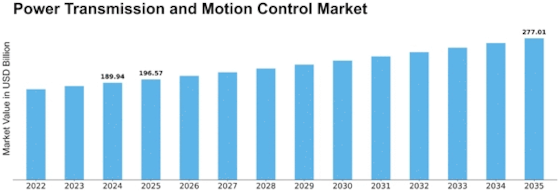
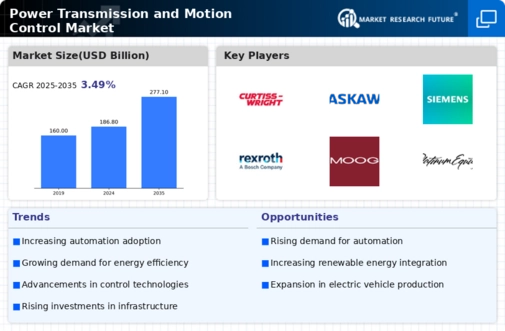
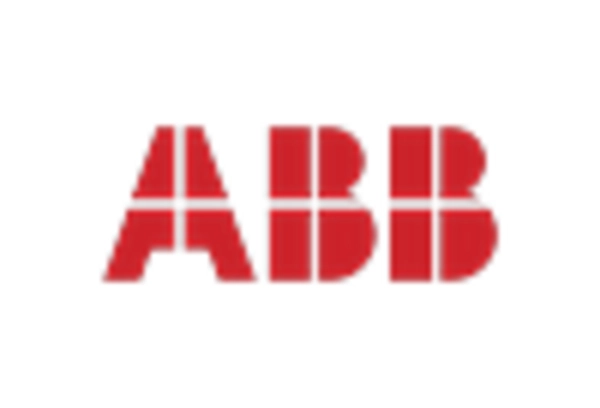
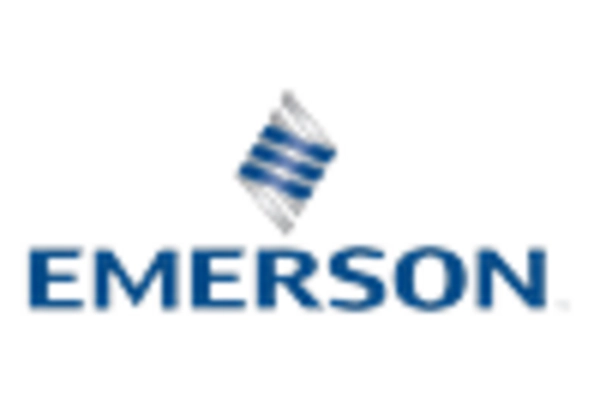
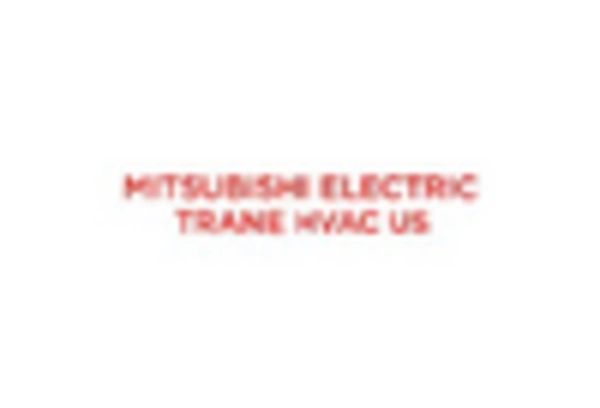












Leave a Comment